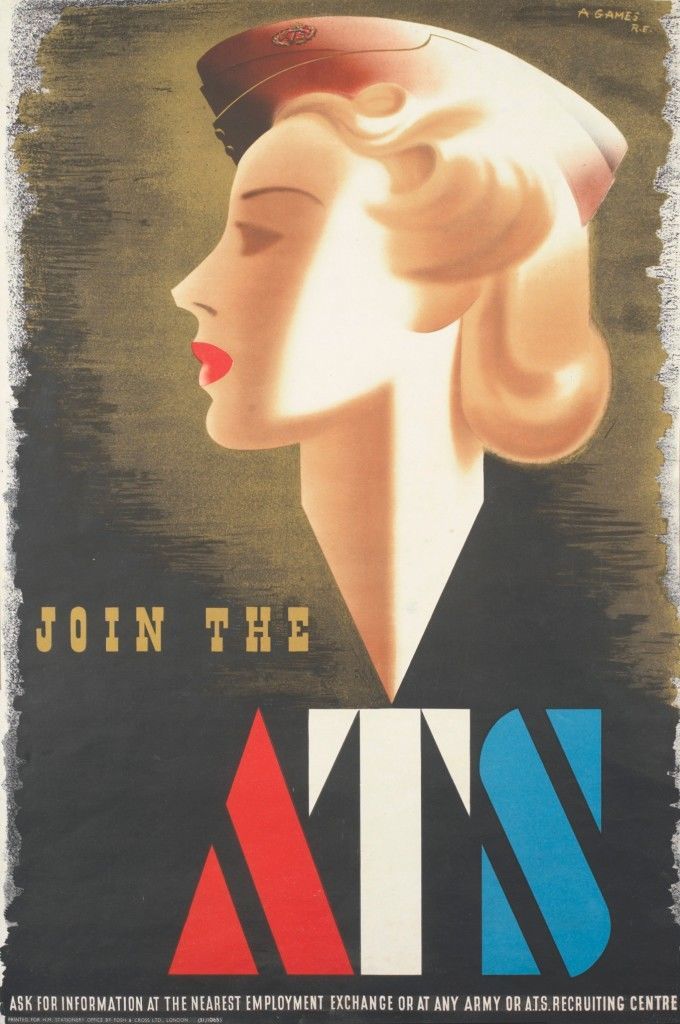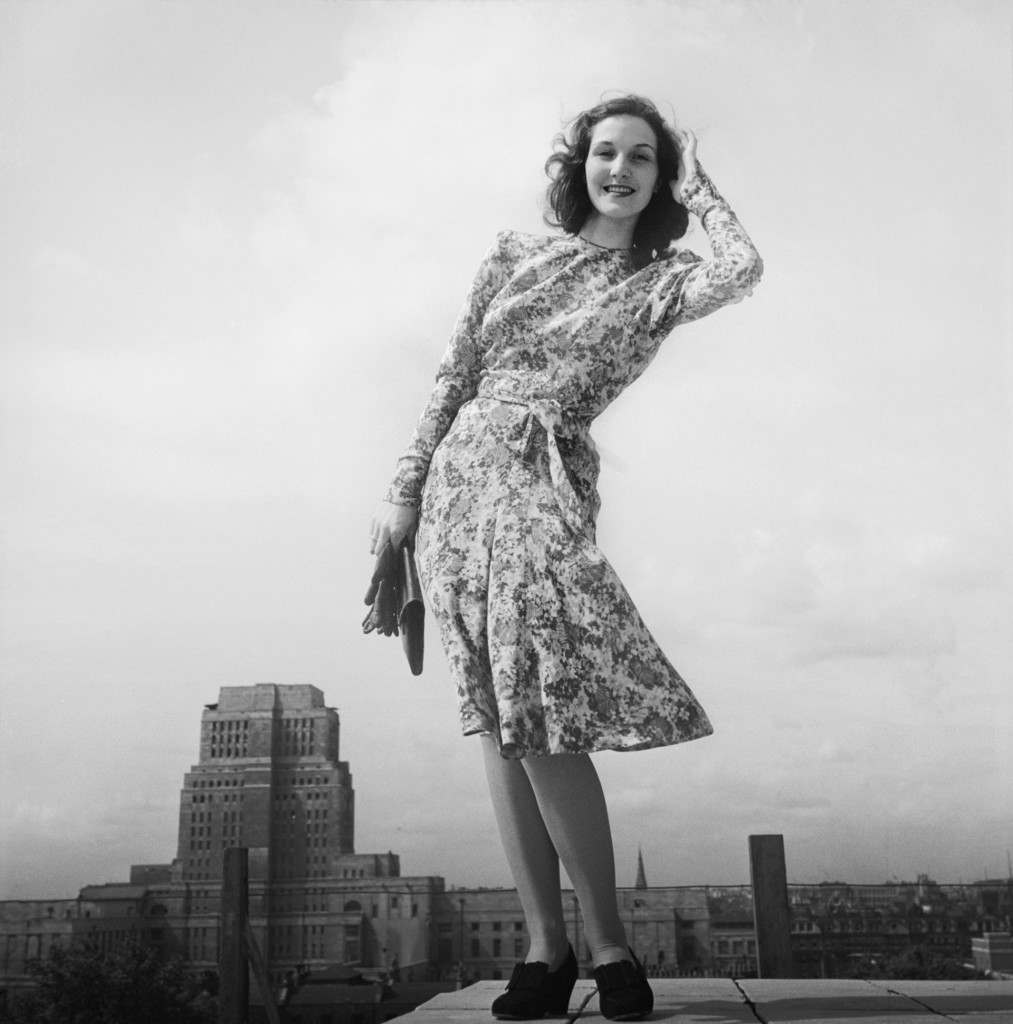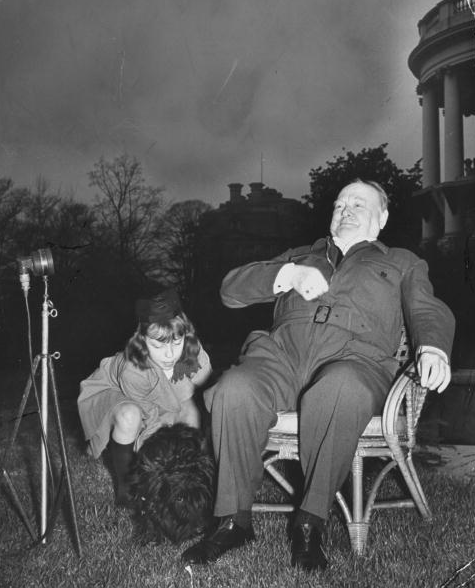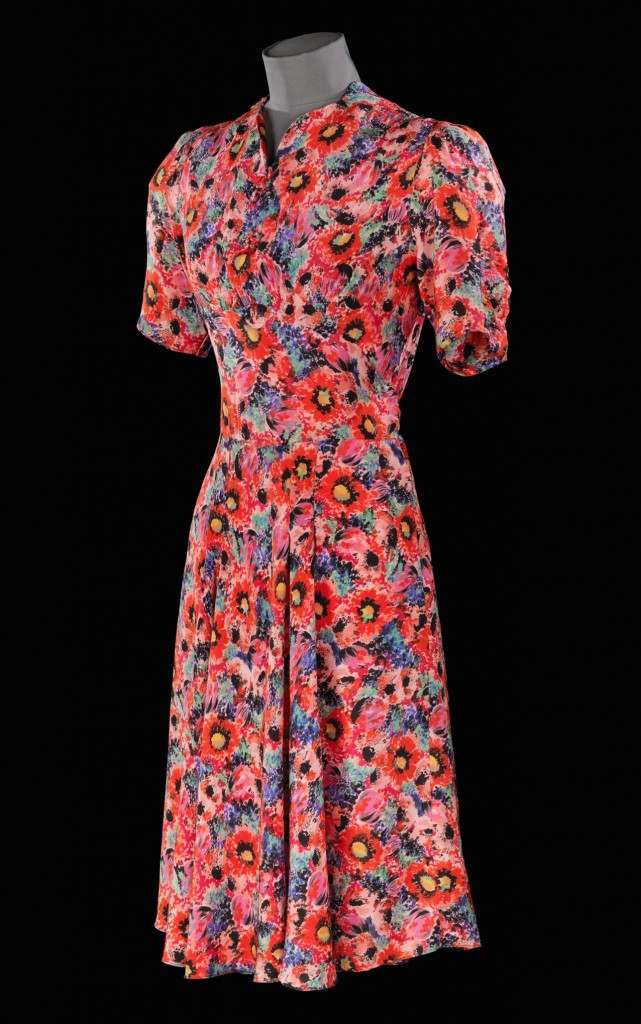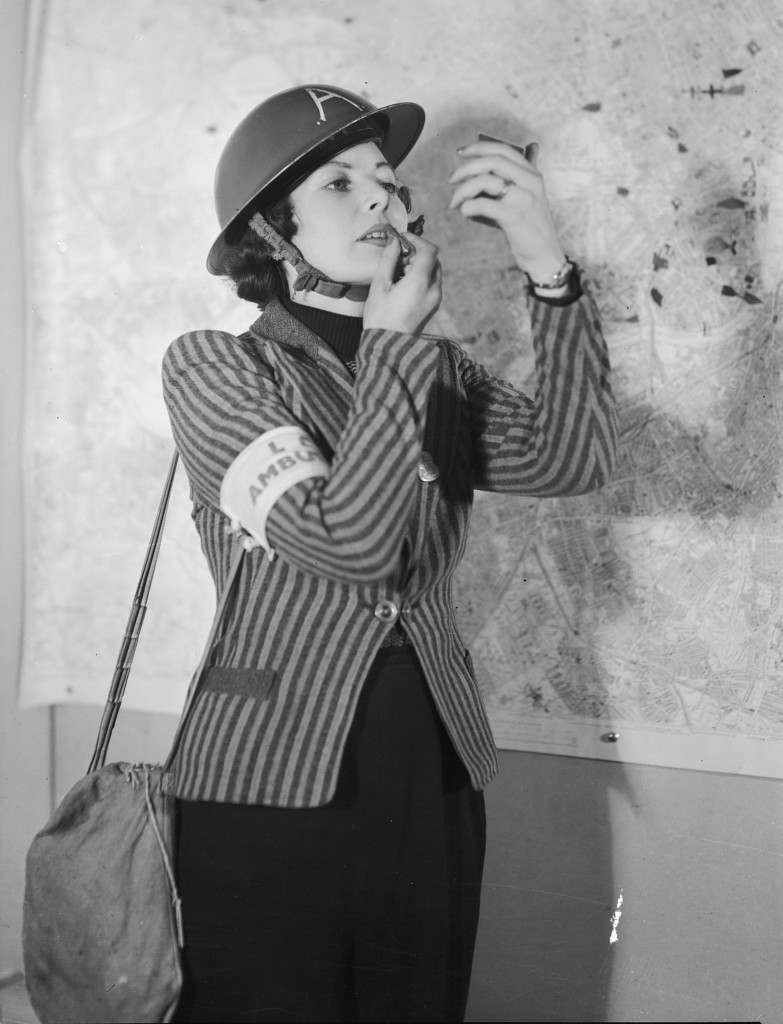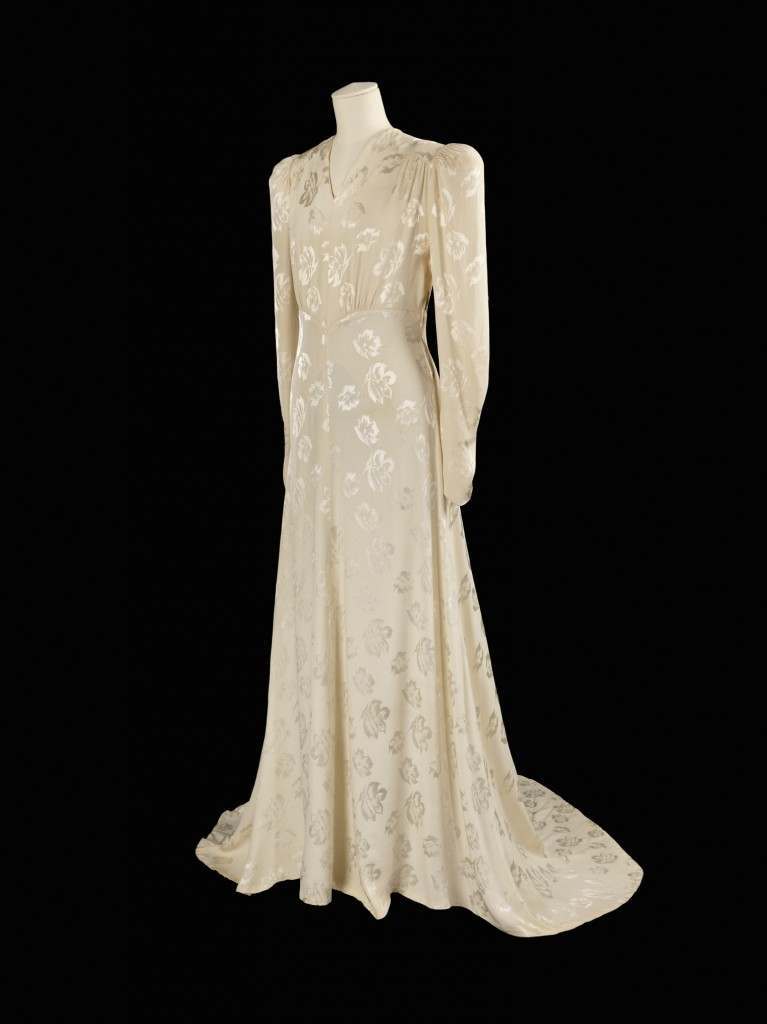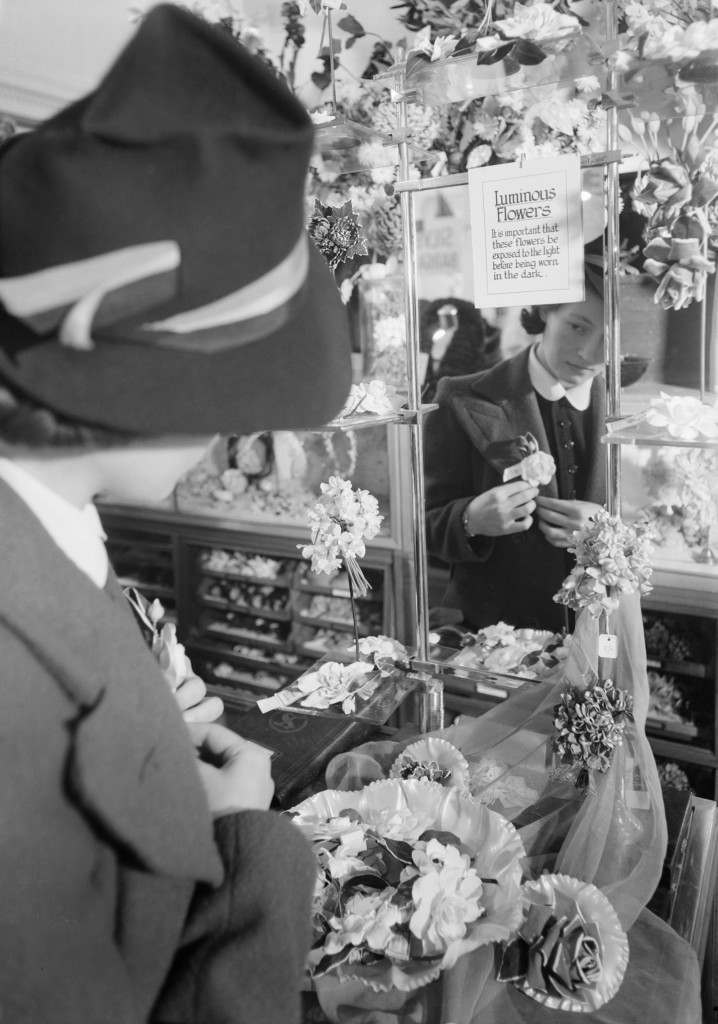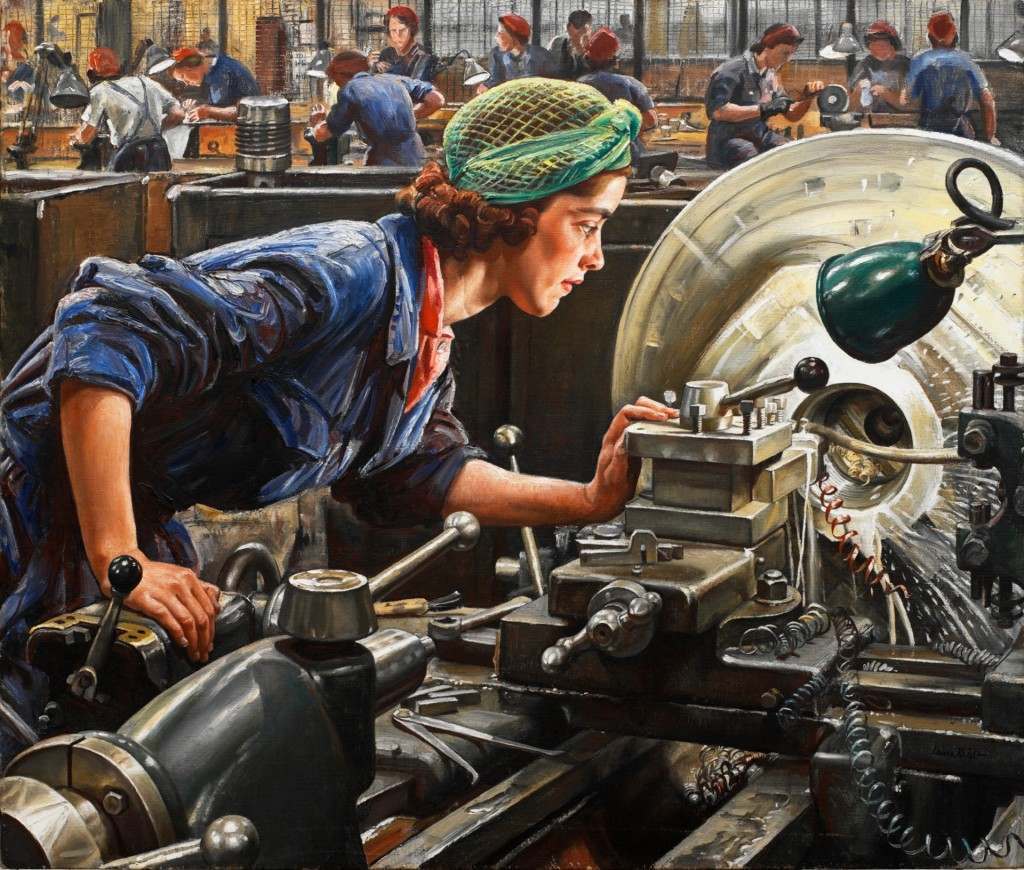Fashion on The Ration explores how World War 2 affected fashion and the the way people dressed.
London’s wonderful Imperial War Museum (if you’ve never been, then go – it’s fantastic) hosts an exhibition exploring how men and women found new ways to dress as the rationing of clothes took hold. It is the story of “creativity, innovation and coping in adversity”.
The imposition of clothes rationing was announced by Oliver Lyttleton, President of the Board of Trade, on 1 June 1941. Making the announcement just before a Bank Holiday allowed the Board of Trade time to brief retailers before the shops reopened.
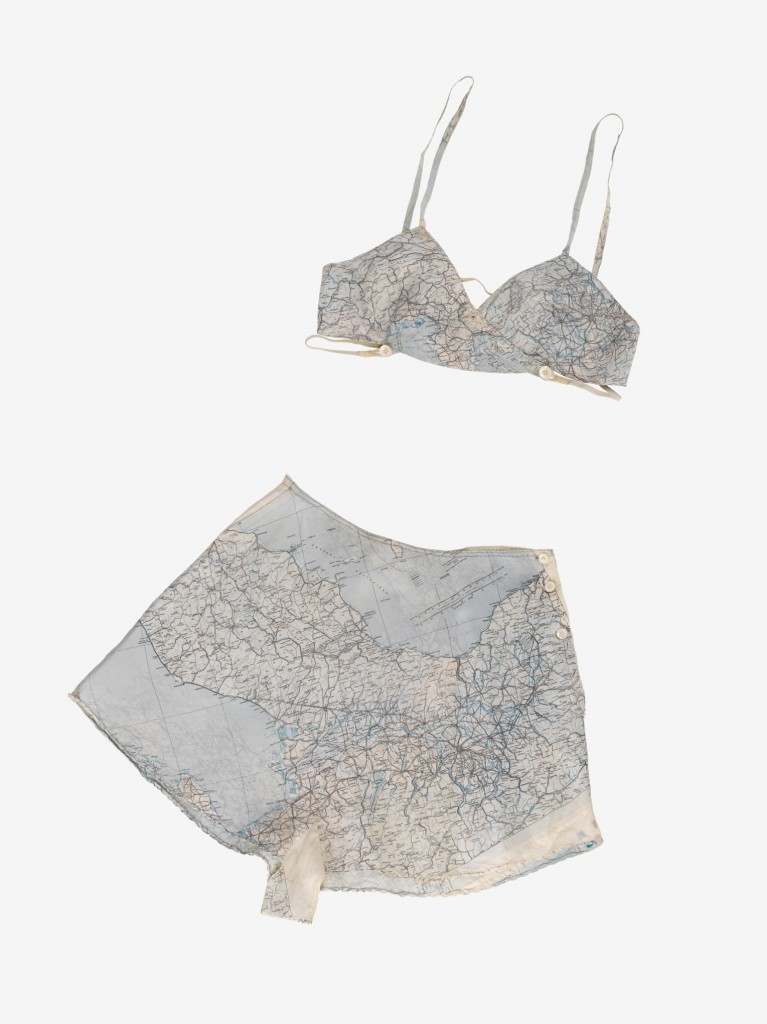
A set of Countess Mountbatten’s underwear made from a silk map given to her by a boyfriend in the Royal Air Force.
The rationing scheme worked by allocating each type of clothing item a ‘points’ value which varied according to how much material and labour went into its manufacture. Eleven coupons were needed for a dress, two needed for a pair of stockings, and eight coupons required for a man’s shirt or a pair of trousers. Women’s shoes meant relinquishing five coupons, and men’s footwear forced the surrender of seven coupons. When buying new clothes, the shopper had to hand over coupons with a ‘points’ value as well as money. Every adult was initially given an allocation of 66 points to last one year, but this allocation shrank as the war progressed. The coupon allowance was at its lowest from 1945 and 1946. For the eight month period from 1 September 1945 to 30 April 1946 only 24 coupons were issued, effectively allowing the shopper only 3 coupons a month.
The ‘Make Do and Mend’ campaign was launched to encourage people to make their existing supplies of clothes last longer.
One memorable item of clothing was the ‘Siren Suit’, a Onesie
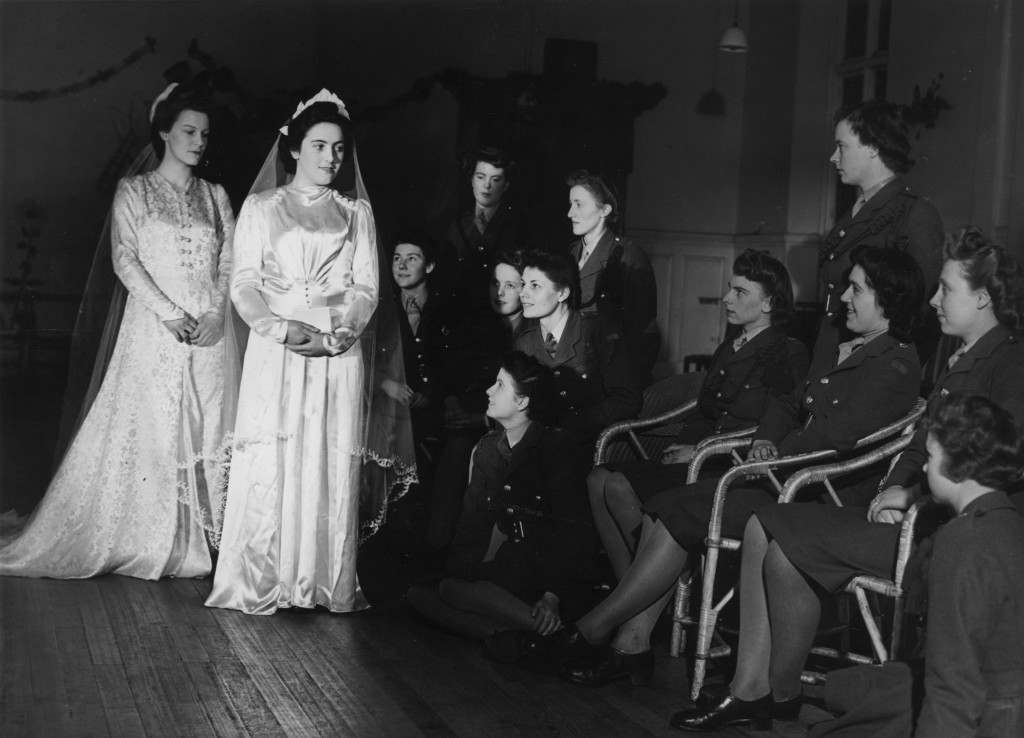
6th January 1944: ATS girls watch models displaying wedding dresses from a pool set up by the War Office to save ATS girls the expense of buying special wedding wear. (Photo by Fred Morley/Fox Photos/Getty Images)
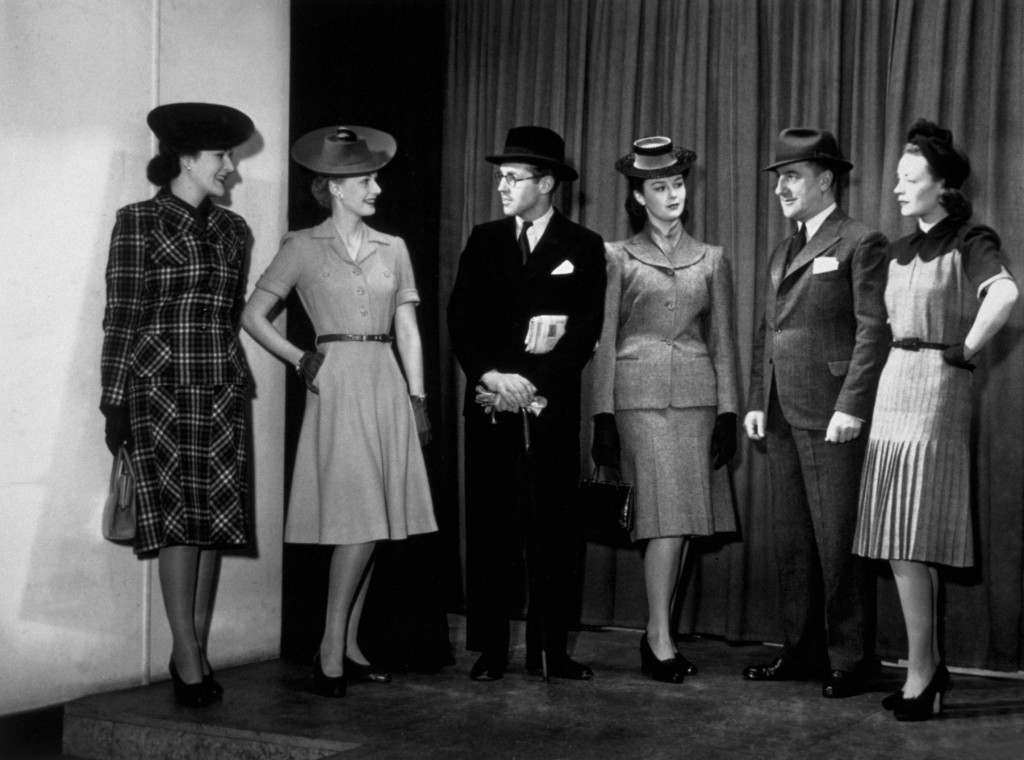
circa 1942: Models at Bush House, London, displaying clothes made from government utility materials, at the first mixed mannequin show ever held. (Photo by Keystone/Getty Images)
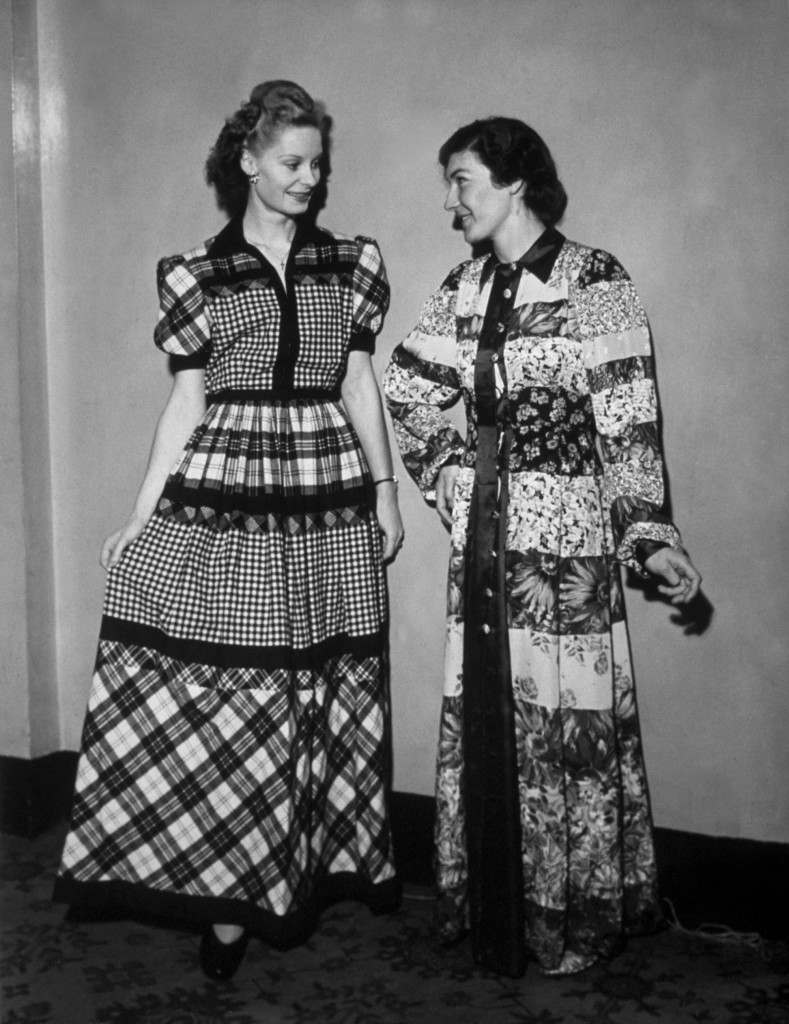
A ‘Make and Mend’ Exhibition organised by women’s organisations, demonstrates how to make new clothes from discarded materials. A Viyella house coat made from eight difference pieces, and another made from old garments such as pyjamas. (Photo by Charles Trusler/Getty Images)
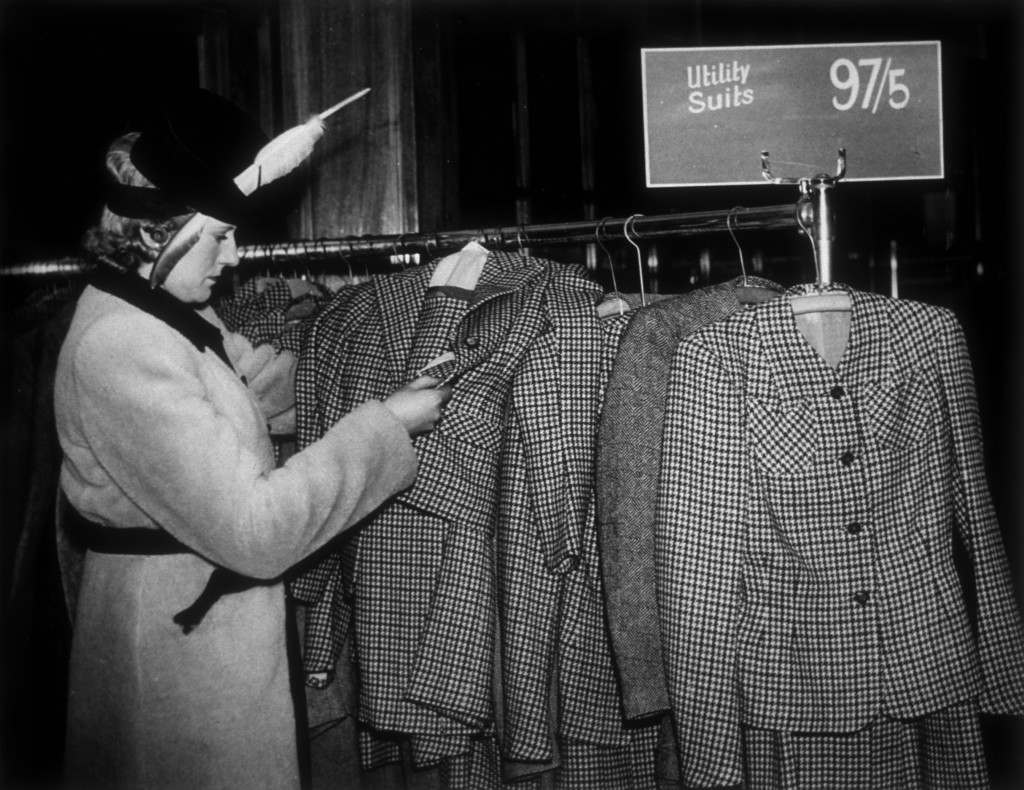
A woman looks at a collection of utility suits at a London store. (Photo by Fox Photos/Getty Images)
In 1942, the first ‘Utility’ clothes went on sale on the British high street as part of a government scheme. These clothes were made from a limited range of quality controlled fabrics. The Utility scheme developed out of a need to make production of civilian clothing in British factories more efficient and to provide price-regulated better quality clothing.
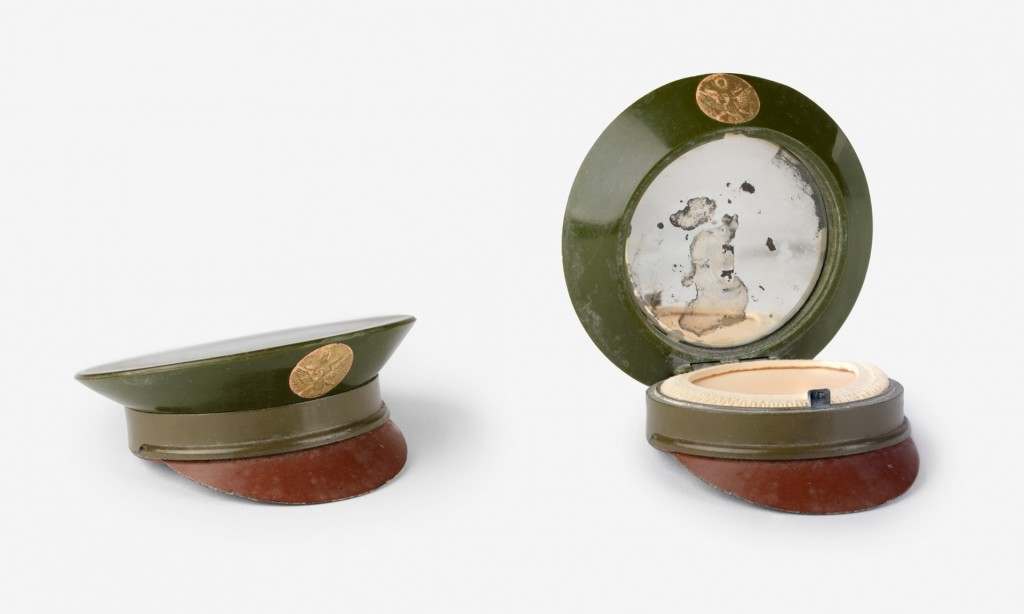
Everyday items reflected military themes, such as this powder compact in the shape of a US army officer’s cap.
Would you like to support Flashbak?
Please consider making a donation to our site. We don't want to rely on ads to bring you the best of visual culture. You can also support us by signing up to our Mailing List. And you can also follow us on Facebook, Instagram and Twitter. For great art and culture delivered to your door, visit our shop.


